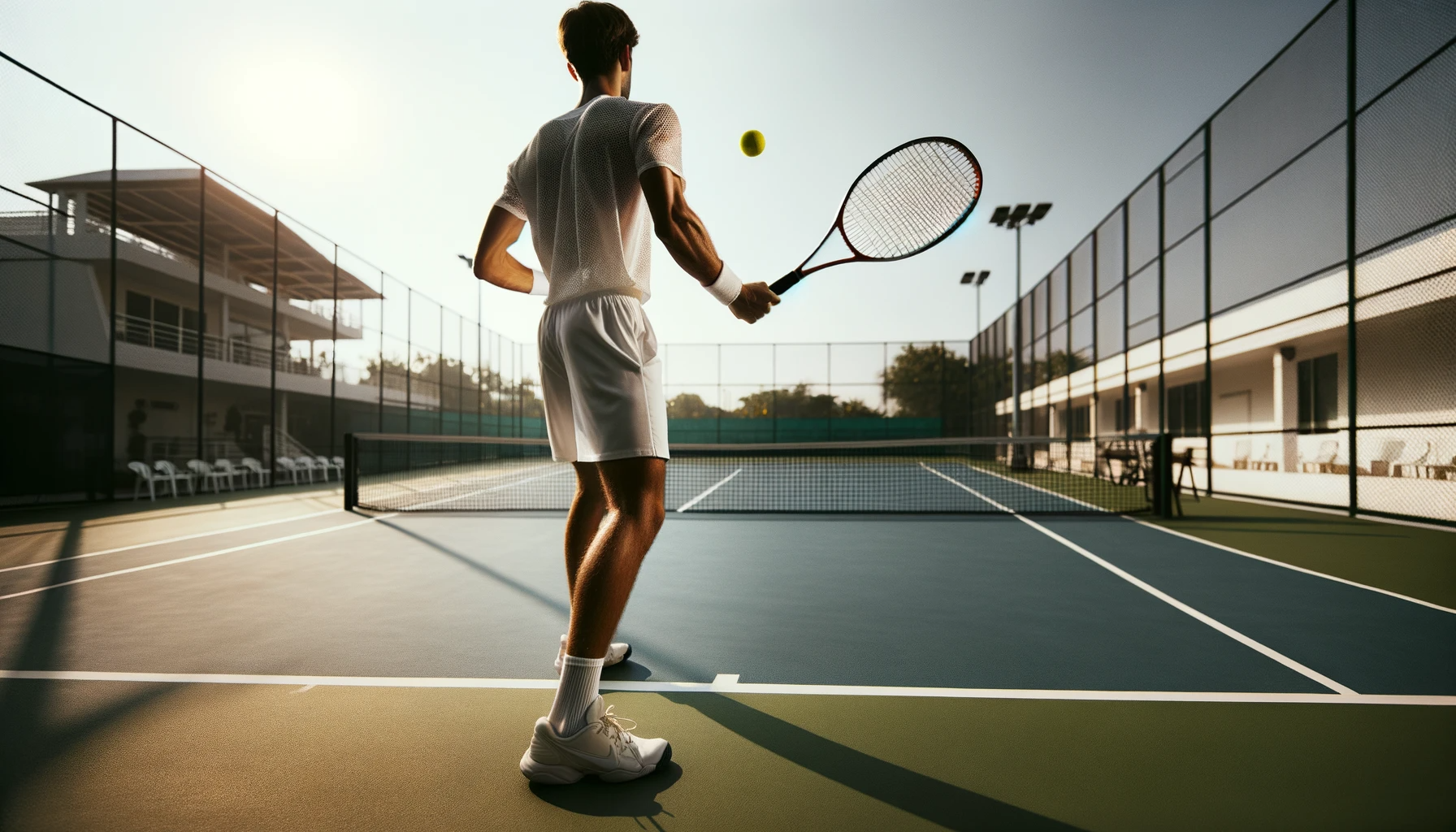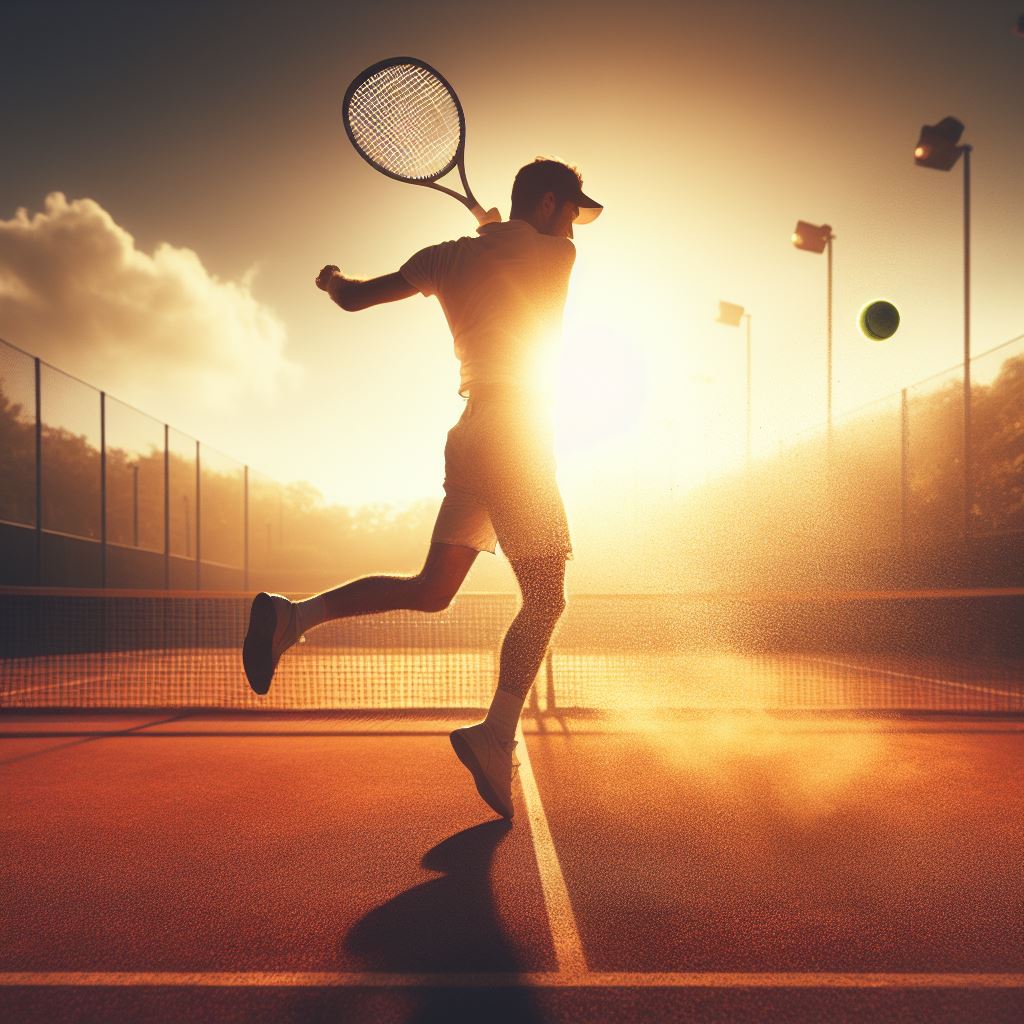Welcome to ‘All You Need: Tennis Basics Overview,’ your comprehensive guide to mastering the fundamentals of tennis.
Whether you’re a beginner looking to understand the ins and outs of the sport or a seasoned player seeking to refine your skills, this article is designed to provide you with the knowledge and insights you need.
From understanding the layout of the tennis court to perfecting essential strokes and strategies, we’ve got you covered.
Get ready to dive into the world of tennis and enhance your game.
Key Takeaways
- Tennis court dimensions: 78 feet long and 27 feet wide for singles matches or 36 feet wide for doubles matches.
- Each half of the court is divided into three sections: baseline, service line, and net area.
- Different tennis court surfaces (grass, clay, and hard court) affect ball speed, bounce, and player’s movement.
- Importance of proper footwork for quick movement, balance, and power in tennis strokes.
Understanding the Tennis Court
To fully grasp the fundamentals of tennis, it is essential to have a clear understanding of the layout and dimensions of the tennis court. A standard tennis court is rectangular in shape, measuring 78 feet long and 27 feet wide for singles matches, or 36 feet wide for doubles matches. These dimensions provide players with ample space to move around and engage in fast-paced rallies.
The tennis court is divided into two halves by a net that stands 3 feet high at the center. Each half is further divided into three sections: the baseline, service line, and net area. The baseline is located at the back of the court and serves as the boundary for serving and returning shots. The service line is parallel to the net and is where players must stand when serving. The net area is the space between the net and the service line, where players engage in volleys and close-quarter exchanges.
In addition to the dimensions, the surface of the tennis court also plays a crucial role in the game. Common tennis court surfaces include grass, clay, and hard court. Each surface has its unique characteristics, affecting the ball’s speed, bounce, and player’s movement. Grass courts, like those used at Wimbledon, tend to be faster with a lower bounce. Clay courts, such as those used at the French Open, are slower and provide higher bounce. Hard courts, the most common surface, offer medium speed and bounce.
Understanding the dimensions and surfaces of a tennis court is vital for players to adapt their strategies, footwork, and shot selection accordingly.
Mastering Tennis Rules and Scoring
Understanding tennis rules and scoring is essential for players to navigate the game effectively and competitively. One key aspect of tennis is the importance of proper footwork. Good footwork allows players to move quickly and efficiently around the court, enabling them to reach the ball in time and maintain balance while striking it. It involves using small, quick steps and maintaining a low center of gravity to ensure stability and agility. By practicing and developing good footwork, players can improve their overall game and increase their chances of success.
In addition to footwork, players should also be aware of common mistakes to avoid in tennis scoring. One common mistake is not understanding the scoring system. Tennis uses a unique scoring system, with points being awarded as 15, 30, 40, and game. Another mistake is not keeping track of the score accurately. It is important to know the current score at all times to make informed decisions during the game. Lastly, players should avoid rushing their shots or making impulsive decisions. Taking the time to assess the situation and plan their shots strategically can greatly improve their chances of winning.
Essential Tennis Equipment for Beginners
One important aspect to consider when transitioning from understanding and mastering tennis rules and scoring is the selection of essential tennis equipment for beginners. Having the right equipment is crucial for a beginner’s success in the sport. When it comes to tennis equipment options, there are a few key items that every beginner should have.
First and foremost, a tennis racket is essential. Beginners should look for a racket that is lightweight and easy to maneuver. It’s also important to choose a racket with the right grip size. The grip size affects the player’s ability to hold the racket properly and can greatly impact their performance. Using a grip that is too small or too big can lead to discomfort and hinder the player’s ability to control the racket effectively.
In addition to a racket, beginners should also invest in a comfortable pair of tennis shoes. Tennis is a sport that involves a lot of movement, so having shoes that provide good support and cushioning is essential to prevent injuries and ensure comfort on the court.
To transition smoothly into the subsequent section about ‘perfecting fundamental tennis strokes’, beginners must understand the importance of having the right equipment and a proper grip. With the right equipment and a solid grip, beginners can focus on improving their strokes and mastering the fundamentals of the game.
Perfecting Fundamental Tennis Strokes
After securing the essential tennis equipment and understanding the importance of a proper grip, the next step in mastering the sport is perfecting fundamental tennis strokes. Improving technique and practicing consistency are crucial in developing a strong foundation for your game.
Here are some key tips to help you perfect your tennis strokes:
- Focus on footwork: Good footwork is essential for maintaining balance and generating power in your strokes. Practice moving efficiently and quickly around the court.
- Master the forehand: The forehand is one of the most important shots in tennis. Work on your grip, swing path, and follow-through to ensure a powerful and accurate shot.
- Develop a reliable backhand: The backhand can be more challenging, but with practice, it can become a valuable weapon in your game. Focus on your grip, footwork, and rotation to hit a strong and consistent backhand.
- Improve your serve: The serve is a critical shot that sets the tone for the point. Work on your toss, proper technique, and generating power to develop a reliable and effective serve.
- Enhance your volley skills: Volleys require quick reflexes and precise hand-eye coordination. Practice your hand positioning, footwork, and timing to become proficient at the net.
Developing Winning Tennis Strategies
To maximize your chances of success on the tennis court, it is crucial to develop effective winning strategies. One key aspect of developing winning strategies is analyzing your opponent’s weaknesses. By identifying areas where your opponent is vulnerable, you can tailor your tactics to exploit those weaknesses and gain an advantage.
To analyze your opponent’s weaknesses, pay close attention to their playing style and patterns. Observe their strengths and weaknesses in terms of shot selection, movement, and strategy. For example, if your opponent struggles with their backhand, you can focus on targeting that side of the court to put them under pressure.
Another important factor in developing winning strategies is adjusting your tactics based on the court surface. Different surfaces, such as grass, clay, and hard courts, have varying characteristics that can significantly impact gameplay. For instance, on clay courts, the ball tends to bounce higher and slower, allowing for longer rallies. In contrast, on grass courts, the ball skids and moves faster, favoring aggressive play. By adapting your tactics to the specific court surface, you can optimize your chances of success.
Frequently Asked Questions
How Do I Choose the Right Tennis Shoes for Beginners?
When choosing tennis shoes for beginners, it is important to consider factors such as fit, support, durability, and traction. These elements will help ensure comfort, stability, and injury prevention during play.
What Are Some Common Tennis Court Etiquette Rules That Beginners Should Know?
Beginners should familiarize themselves with common tennis court etiquette rules, such as respecting opponents, waiting for a break in play before walking across a court, and refraining from making excessive noise. Additionally, proper tennis attire for beginners is essential for comfort and performance.
Can You Provide Tips on Improving Footwork and Agility for Tennis?
Improving footwork and agility for tennis can be achieved through various drills and exercises. Footwork drills, such as ladder exercises, can help players develop quickness, balance, and coordination, leading to enhanced on-court performance and maneuverability.
What Are Some Effective Warm-Up Exercises to Prevent Injuries Before Playing Tennis?
Effective warm-up exercises are crucial for preventing injuries in tennis. Pre-match stretches, such as arm circles and leg swings, can help increase flexibility and reduce the risk of muscle strains. Proper hydration is also important to maintain optimal performance and prevent cramps.
Are There Any Specific Strategies to Help Beginners Improve Their Serve?
Beginners can improve their serve by focusing on proper technique, such as a fluid motion and a relaxed grip. Common mistakes include improper stance and lack of shoulder rotation.
Conclusion
In conclusion, tennis is a game that requires a solid understanding of the court, rules, and equipment. By mastering the fundamental strokes and developing winning strategies, beginners can improve their game and enjoy the sport to its fullest.
So, grab your racket, step onto the court, and get ready to have some fun while honing your tennis skills. Remember, practice makes perfect, and with dedication, you’ll be serving aces in no time.








No Comment! Be the first one.